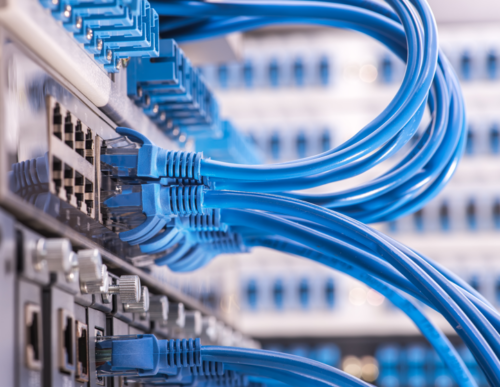The global Data Center Structured Cabling market is a theater of intense and highly technical competition, where a select group of established global manufacturers are vying to provide the foundational connectivity for the world's digital infrastructure. This rivalry is fueled by the market's strong growth prospects and the enormous strategic value that a reliable, high-performance physical layer provides to data center operators. The nature of the Data Center Structured Cabling Market Competition is fundamentally a contest of technological superiority, manufacturing scale, supply chain reliability, and brand reputation. It pits large, diversified infrastructure providers against highly specialized connectivity experts, with all players competing on the basis of performance specifications (such as bandwidth and insertion loss), product quality, system warranty, and the completeness of their end-to-end solution. This intense competition forces companies to continuously invest heavily in R&D to keep pace with the relentless march of Ethernet standards and the evolving architectural needs of modern data centers.
The competitive strategies employed by vendors are tailored to their specific market position and core competencies. The large, multinational leaders, such as CommScope and Corning, compete on the basis of their immense scale, vast patent portfolios, and their ability to offer a complete, globally available, and fully warranted system. Their strategy is to be the trusted, single-source provider for large enterprise and hyperscale customers who prioritize risk mitigation, long-term support, and a globally consistent supply chain. They leverage their deep relationships with distributors, consultants, and large installation partners as a key competitive advantage. In contrast, other specialized leaders, like Panduit and Siemon, often compete on the basis of product innovation and engineering excellence in specific areas. Their strategy might be to differentiate through a superior pre-terminated fiber solution, an innovative high-density patching system, or a more advanced cable management offering. They build a reputation for being the high-performance choice, appealing to customers in demanding environments like financial services or high-performance computing.
The future of competition in the structured cabling market will be increasingly defined by the ability to support next-generation data rates and to integrate more intelligence into the physical layer. The competitive battleground is shifting from simply providing passive components to offering a more holistic infrastructure solution. Vendors will compete on their ability to offer validated system designs for 400G and 800G network architectures and beyond. The Data Center Structured Cabling Market size is projected to grow USD 11.17 Billion by 2035, exhibiting a CAGR of 10.70% during the forecast period 2025 - 2035. Furthermore, the ability to offer an integrated Automated Infrastructure Management (AIM) solution, which provides real-time visibility and management of the physical network, will become a more significant competitive differentiator, particularly for large, complex data centers where manual documentation is no longer viable. The ultimate winners will be those who can successfully blend world-class manufacturing and quality control with a deep understanding of data center network architecture and a clear vision for the future of the physical layer.
Top Trending Reports -
